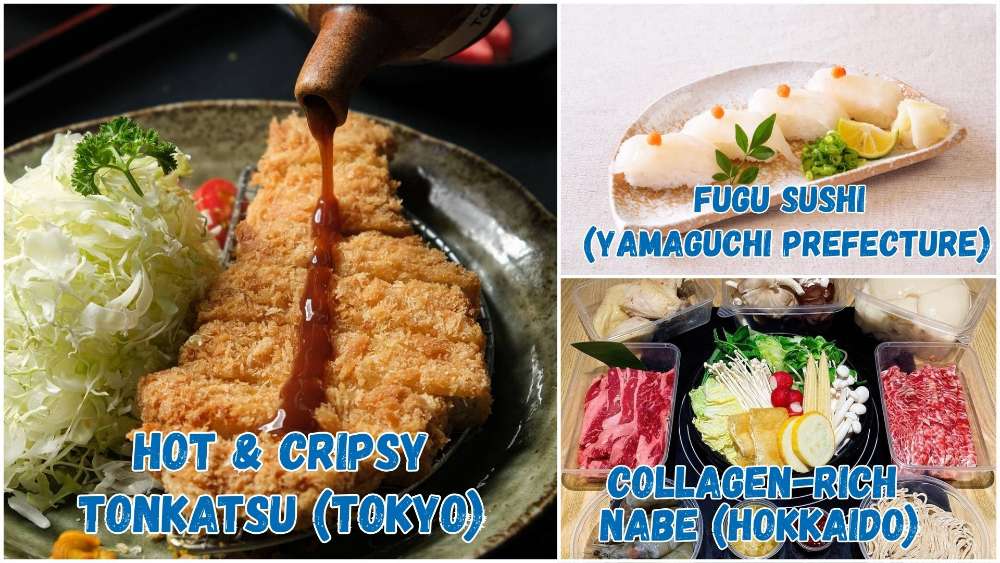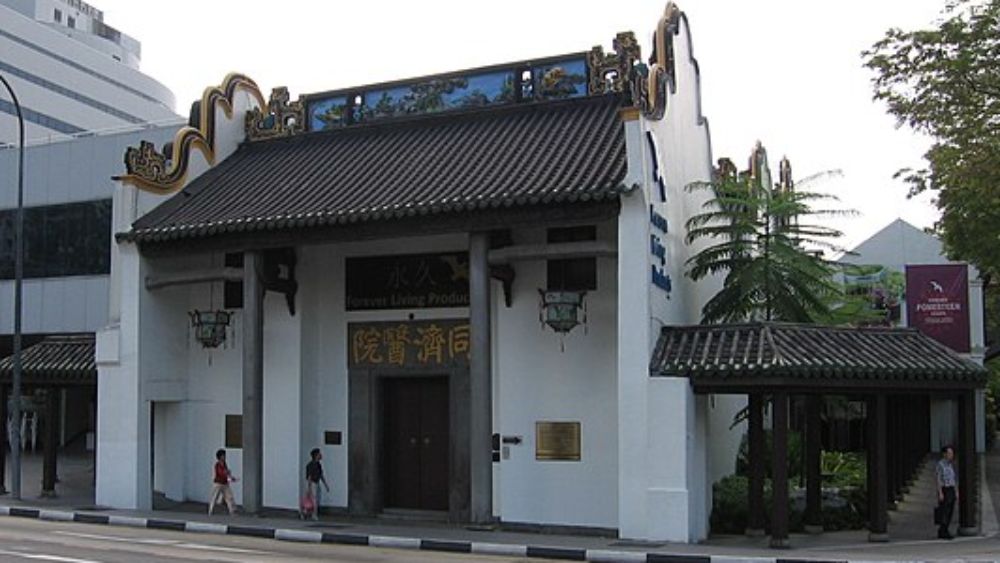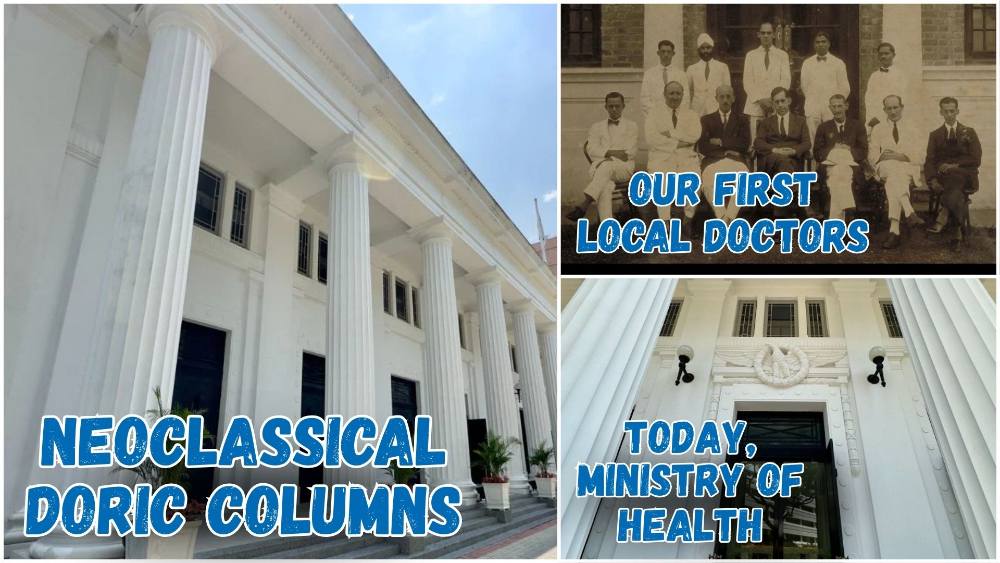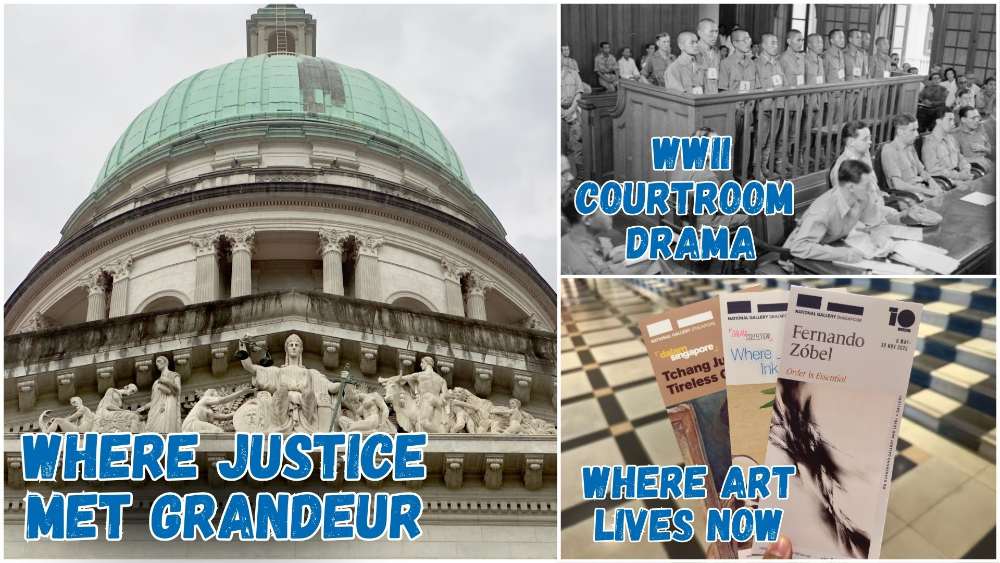National Monuments Of Singapore: Former Thong Chai Medical Institution
What is a National Monument? Who gazettes them? How many national monuments are there in Singapore? To date, the Preservation of Sites and Monuments, a division of National Heritage Board, has identified and gazetted 75 buildings, structures and sites of national significance as an integral part of Singapore’s built heritage.
And we're here to tell you all about them - one National Monument at a time!
You've probably passed by or stepped into more than a few of them without realising they were National Monuments: Al-Abrar Mosque, Asian Civilisations Museum, the Civilian War Memorial, Saint Andrew's Cathedral, the Esplanade Park Memorials, Fort Siloso on Sentosa - no need to plan an itinerary for friends visiting from overseas; just show them this article ✌️
In this edition, we cast a spotlight on one of the first buildings to be gazetted as a National Monument in Singapore, the Former Thong Chai Medical Institution.
📍 Location
The Former Thong Chai Medical Institution was the 8th building to be gazetted as a National Monument, and is located near other National Monuments such as the Family Justice Courts (Former Ministry of Labour building) and Tan Si Chong Su Temple. The MRT stations nearest to it are Clarke Quay and Chinatown.
📅 Significant dates
Dates built
- 1867: Thong Chai Yee Say began in a rented shophouse at 31 Upper Macao Street (now Upper Pickering Street)
- 1891-1892: Thong Chai Medical Institution was built at 3 Wayang Street (now 50 Eu Tong Sen Street)
Milestones:
- 1906: The Singapore Chinese Chamber of Commerce (SCCC) was founded within the building
- 1976: Thong Chai Medical Institution vacated the building
- 1979: The place was reopened as an arts and crafts centre
- 1990s: The building even housed a discotheque and restaurants
Date gazetted: 6 Jul 1973
📜 History
In 1867, a group of Chinese merchants established Thong Chai Medical Institution in a shophouse on Upper Pickering Street, originally named Thong Chai Yee Say (同济医社, “Thong Chai Medical Society”).
The name “Thong Chai” comes from the Cantonese words tong (同, “universal”) and ji (济, “relief”), reflecting the institution’s mission to provide free medical diagnoses and herbal treatments to people of all backgrounds.
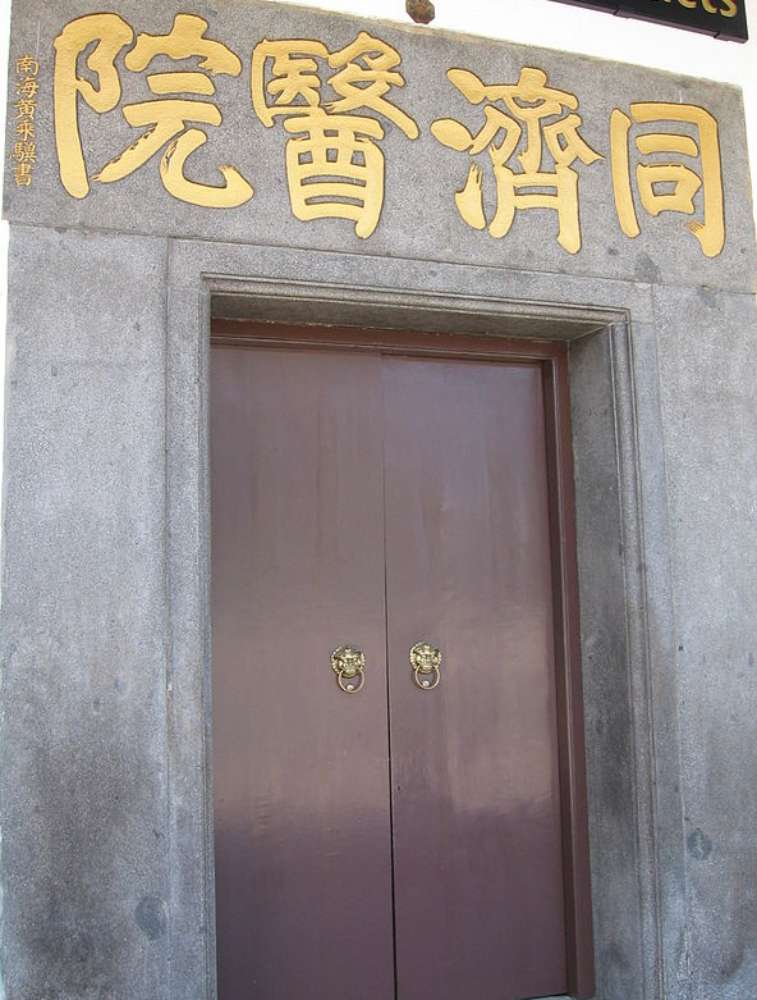
The four Chinese words spell "Thong Chai Medical Institution". | IMAGE: WIKIMEDIA COMMONS/@SENGKANG
Recognising the Thong Chai Medical Society’s charitable mission, Sir Cecil Clementi Smith, the Governor of the Straits Settlements, approved a plot of land for the construction of a new building. The construction, funded by public contributions and donations from individuals like Gan Eng Seng (a Malacca-born Hokkien philanthropist who was also the trustee of the Thong Chai estate at the time), began in 1891. The new building was completed and opened in 1892, at which point it was renamed Thong Chai Medical Institution (同济医院).
The Former Thong Chai Medical Institution also served as a hub for guild meetings and political activities. In 1906, Chinese merchants established the SCCC within its walls, using the building for meetings until moving to the former residence of Teochew merchant Wee Ah Hood (黄亚佛), a rich Teochew merchant, on Hill Street. Today, the SCCC is known as the Singapore Chinese Chamber of Commerce and Industry.
During the Second Sino-Japanese War in 1937, prominent Hokkien businessman and philanthropist Tan Kah Kee (陈嘉庚), who founded The Chinese High School, created the China Relief Fund to support Chinese war efforts against Japan. In 1939, the committee of the fund sought skilled mechanics and drivers via local Chinese newspapers to transport war supplies to China along the Burma Road.
While a large part of the volunteers (later called the Nanyang Volunteers) were Chinese men, the group also included some Malay and Indian men, and even a few Chinese women. They trained at Lian Shan Shuang Lin Monastery and initially stayed at Thong Chai Medical Institution, which also served as their administrative centre.
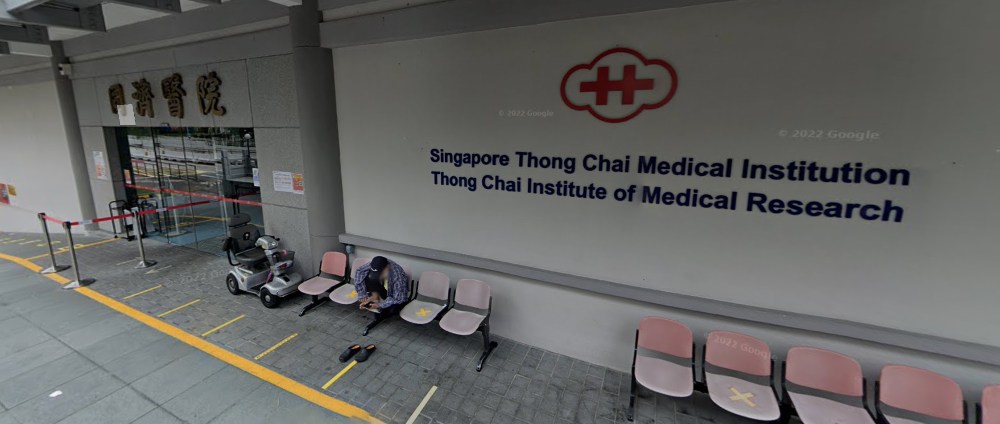 The current Thong Chai Medical Institution's headquarters at its present building on Chin Swee Road. | IMAGE: SCREENSHOT FROM GOOGLE MAPS
The current Thong Chai Medical Institution's headquarters at its present building on Chin Swee Road. | IMAGE: SCREENSHOT FROM GOOGLE MAPS
Thong Chai Medical Institution operated in the building until 1979. Afterward, it relocated to new premises on Chin Swee Road, where it continues to offer free traditional Chinese healthcare to people of all backgrounds to this day.
In the late 1990s, the building transitioned into a nightclub and later hosted several restaurants. In 2000, it was acquired by the Tung Lok Group and opened as a restaurant named Jing. Shortly after, it was rebranded to Asian, but both ventures struggled to attract patrons and eventually closed in 2003 due to the SARS outbreak.
The building remained vacant for about two years until it was repurposed in 2005. Currently, it is owned by Forever Living Products Intl, a multi-level marketing company specialising in aloe vera products, which purchased the building from the Government in 2005 for $7 million.
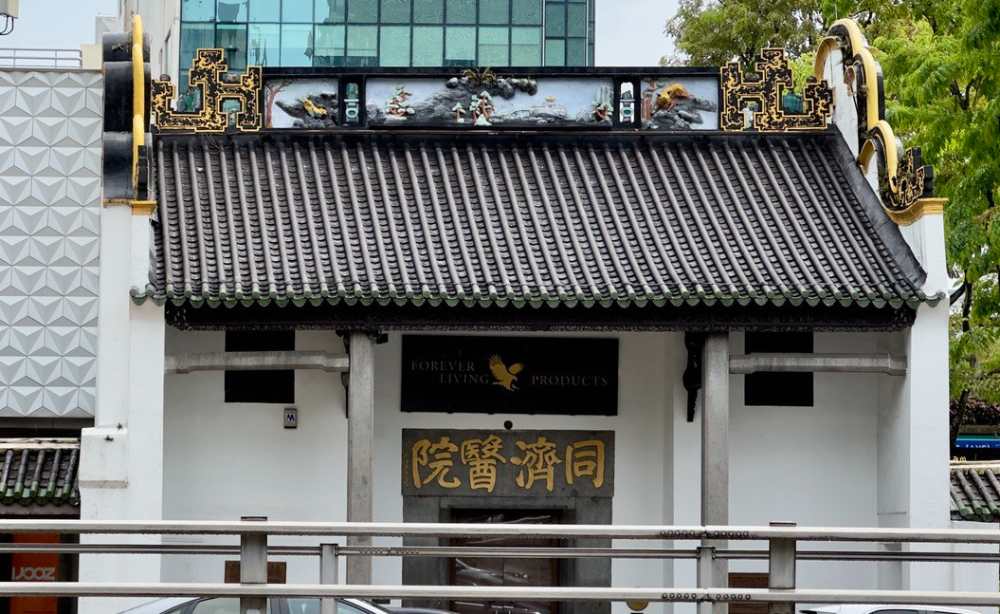 IMAGE: NG KAI
IMAGE: NG KAI
📐 Design and architecture
The Former Thong Chai Medical Institution, designed in the traditional Cantonese style, stands as one of the few remaining examples of secular Cantonese architecture in Singapore. Typical features of Cantonese buildings are evident, such as the straight, ornamented roof ridge and the gable-end (the triangular part of an outside wall of a building) walls shaped like Chinese wok handles. The structure includes three courtyards, following an elongated layout commonly seen in urban residences in Guangdong Province, China, known as the “bamboo house” (竹筒屋) by the Cantonese.
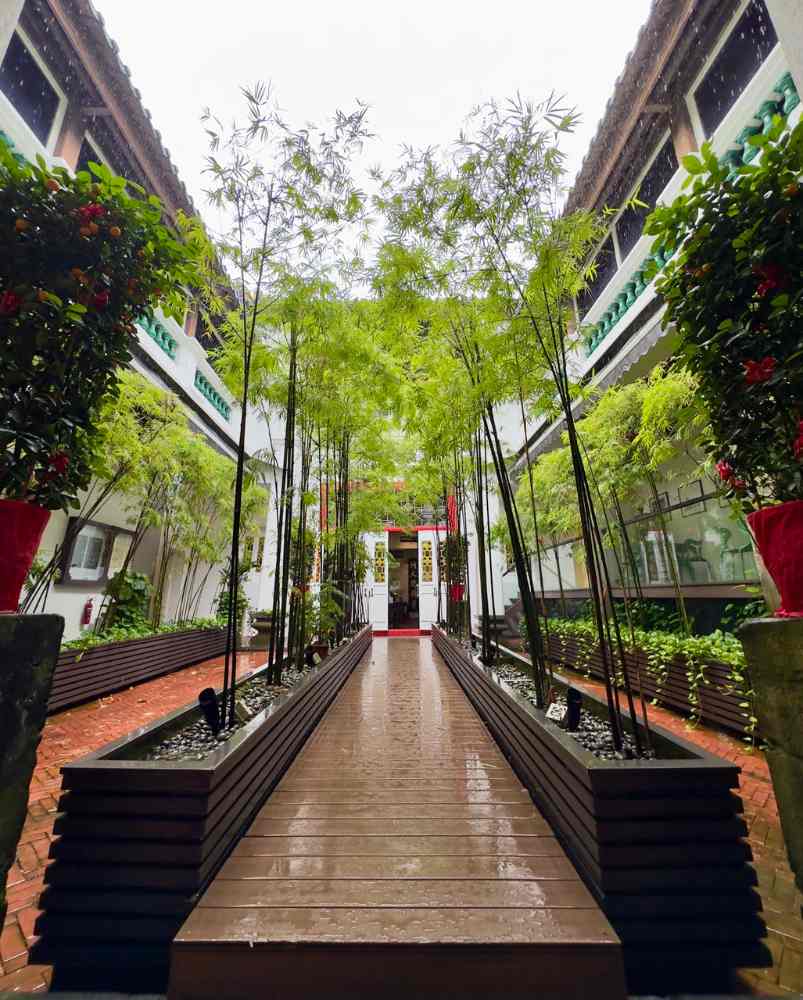 IMAGE: NG KAI
IMAGE: NG KAI
In the front courtyard, an intricate giltwood carving (made of wood, and gilded) depicting the an ba xian (暗八仙, “Treasures of the Eight Immortals”), believed to ward off evil and bring good fortune, hangs from the roof.
The main hall, with its high ceilings where patients were once consulted, features calligraphic inscriptions praising the charitable deeds of Thong Chai Medical Institution and the early Chinese community in Singapore. The first characters of each pair of matching couplets spell out the institution’s name: tong and ji.
Historically, the rear hall served as the dispensary, and herbs were spread out to dry in the rear courtyard.
🕖 Opening hours
Regular visiting hours are 11am to 8pm on the weekdays, and 1pm to 5pm on Saturday. The building is closed on Sundays.
🎟️ Admission
Entry is free. However, certain areas of the building are restricted to customers of Forever Living Products.
For the latest updates on Wonderwall.sg, be sure to follow us on TikTok, Telegram, Instagram, and Facebook. If you have a story idea for us, email us at [email protected].






